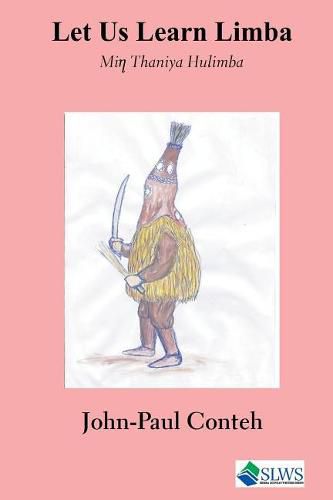Readings Newsletter
Become a Readings Member to make your shopping experience even easier.
Sign in or sign up for free!
You’re not far away from qualifying for FREE standard shipping within Australia
You’ve qualified for FREE standard shipping within Australia
The cart is loading…






This piece of work is a humble attempt at preparing a source book for the teaching of Limba language in schools and colleges. It has been observed by linguists that the Limba ethnic group has got the largest number of dialects in Sierra Leone. There are at least 12 dialectal variations in Limba but only five are most significant in that they have got a very large number of speakers. These are Biriwa, Safroko, Sella, Tonko and Wara Wara. The other dialects are a sub-set of either one or two of the bigger dialects. For example, Bimankoh is a subset of Biriwa and Safroko; Bikelen is a subset of Biriwa and Songo, and Kalanthuba; Bisonko is a subset of Kelen and Wara Wara; while Kalanthuba is a subset of Safroko, Simiria and Biriwa; the Simiria is a subset of Safroko and Kalanthuba, slightly influenced by Themne and Koranko. The Kamukeh dialect is a mixture of Wara Wara, Yalunka and Fula who surround them in Koinadugu district. It is also observed that the small quantum of written materials in Limba is heavily influenced by Tonko and Sela Limba. School children of other dialects other than the two are often faced with a gross disadvantage when taking the Limba Language at Basic Education Certificate Examinations (BECE) to mark the completion of Junior Secondary School (JSS). The reason is that the few Tonko/Sela writers do not take cognizance of the dialectal variations at least among the five major groupings.
$9.00 standard shipping within Australia
FREE standard shipping within Australia for orders over $100.00
Express & International shipping calculated at checkout
This piece of work is a humble attempt at preparing a source book for the teaching of Limba language in schools and colleges. It has been observed by linguists that the Limba ethnic group has got the largest number of dialects in Sierra Leone. There are at least 12 dialectal variations in Limba but only five are most significant in that they have got a very large number of speakers. These are Biriwa, Safroko, Sella, Tonko and Wara Wara. The other dialects are a sub-set of either one or two of the bigger dialects. For example, Bimankoh is a subset of Biriwa and Safroko; Bikelen is a subset of Biriwa and Songo, and Kalanthuba; Bisonko is a subset of Kelen and Wara Wara; while Kalanthuba is a subset of Safroko, Simiria and Biriwa; the Simiria is a subset of Safroko and Kalanthuba, slightly influenced by Themne and Koranko. The Kamukeh dialect is a mixture of Wara Wara, Yalunka and Fula who surround them in Koinadugu district. It is also observed that the small quantum of written materials in Limba is heavily influenced by Tonko and Sela Limba. School children of other dialects other than the two are often faced with a gross disadvantage when taking the Limba Language at Basic Education Certificate Examinations (BECE) to mark the completion of Junior Secondary School (JSS). The reason is that the few Tonko/Sela writers do not take cognizance of the dialectal variations at least among the five major groupings.